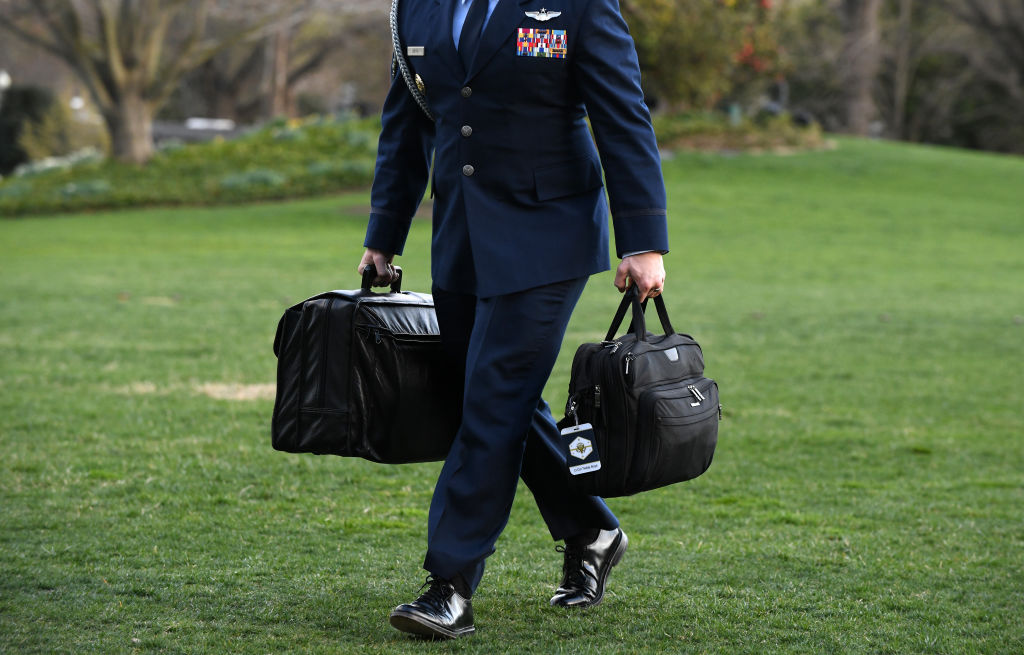
With the presidential election only 10 days away, what US nuclear strategy might be under a Joe Biden administration and what that might imply for US extended nuclear deterrence should be key issues of concern for the region, and for Australia.
The US is facing a more adverse strategic environment than it has for a long time. It is confronted by two nuclear-capable peer adversaries: China, which is seen as the main threat, and Russia, whose nuclear force is being upgraded rapidly. The modernisation of China’s nuclear forces could cause Beijing to shift away from its traditional no-first-use policy.
The combination of Russian and Chinese nuclear capability development—not to mention an unpredictable and nuclear-armed North Korea, and the prospect of an Iranian nuclear breakout as a consequence of President Donald Trump’s scrapping of the Joint Comprehensive Plan of Action—means that Biden would have to think carefully before succumbing to calls to adhere to a ‘no first use’ doctrine or to make a ‘sole purpose’ declaration. Both of these options will be advocated by proponents in the US arms-control and disarmament community.
As President Barack Obama’s deputy, Biden supported the idea of a no-first-use posture for nuclear weapons, stating in 2017 that, ‘Given our non-nuclear capacities and the nature of today’s threats, it’s hard to envision a plausible scenario in which the first use of nuclear weapons by the United States would be necessary or would make sense.’ The Democratic Party’s 2020 platform suggests that ‘the sole purpose of our nuclear arsenal should be to deter—and, if necessary, retaliate against—a nuclear attack, and we will work to put that belief into practice, in consultation with our allies and military’.
The platform also commits to ‘work to maintain a strong, credible deterrent while reducing our overreliance and excessive expenditure on nuclear weapons’, but would apparently cancel both the nuclear sea-launched cruise missile and low-yield warhead for the Trident—both initiatives of the Trump administration’s 2018 nuclear posture review.
So it seems probable that a Biden administration would seek to move back to nuclear policy that is similar to, if perhaps a bit more ambitious than, that suggested in Obama’s 2009 Prague speech, which emphasised nuclear disarmament that was consistent with maintaining a ‘safe, secure and effective arsenal to deter any adversary, and guarantee that defense to our allies’.
The risk is that Biden may still view nuclear weapons through the lens of Prague 2009, rather than the strategic reality of 2020. In 2009, the main threat to the US came from international terrorism and nuclear weapons were largely seen as peripheral. But that was then and this is now, and the primary threat is from peer adversaries such as China and Russia.
Of course, Biden isn’t blind to the challenges from China and Russia, but the military capabilities—including nuclear ones—of America’s peer adversaries have improved considerably during the past 11 years.
Today, the US and its allies face a far more potent military challenge in technological terms and traditional advantages are being eroded in key areas. For example, the US Navy is being openly challenged by a rapidly expanding and modernising People’s Liberation Army Navy, and the PLA Air Force has undertaken a broad modernisation of its air combat capabilities that involves replacing obsolete third-generation platforms with advanced ‘ fourth-plus’ and fifth-generation systems, including for strategic strike.
The establishment of the PLA Strategic Support Force and the growth of advanced Chinese counter-space, cyber and electronic ‘network warfare’ capabilities is placing the US lead in C4ISR (command, control, communications, computers, intelligence, surveillance and reconnaissance) at risk, and with it the US ability to rapidly gain and sustain a knowledge edge in warfare. The PLA Rocket Force has grown dramatically and now has far more potent anti-access/area-denial capabilities that are increasingly putting the US ability to project power into the western Pacific at risk.
Russia’s military continues to engage in large-scale modernisation. Moscow faces greater challenges in economic terms to sustain such an effort, but investment in long-range hypersonic missiles, the blurring of boundaries between strategic non-nuclear and tactical nuclear weapons, and new counter-space and cyber systems are making Russia a more dangerous foe in 2020 than it was in 2009.
With these developments in mind, now is not the time for well-intentioned efforts towards denuclearisation or adoption of a no-first-use posture. Any decision by Biden to embrace a ‘sole purpose’ declaration would end US strategic ambiguity. With the military balance much less skewed in the US’s favour, China and Russia could use conventional military force to impose their will, without having to worry about a nuclear riposte from the US, so long as they themselves remained below the nuclear threshold. With enhanced conventional capabilities, they now have a much greater ability to inflict heavy losses on US forces. If they sink an aircraft carrier or two or use overwhelming force against US allies, for example, what would a Biden administration committed to a no-first-use policy do?
Such a state of affairs would not engender confidence in US extended nuclear deterrence among America’s allies. For Tokyo, Seoul and Canberra, or Warsaw for that matter, knowing that the US would no longer deter major conventional attacks by maintaining the possibility of a nuclear response would increase the prospects of military coercion or threats from China and Russia.
That prospect is certain to have some decision-makers—notably in Tokyo and Seoul—re-examining their options for acquiring an independent nuclear deterrent, simply because they could no longer count on the US.
It would also leave Australia in a difficult position. The 2009 defence white paper’s comment on the importance of extended nuclear deterrence still resonates today:
Australian defence policy under successive governments has acknowledged the value to Australia of the protection afforded by extended nuclear deterrence under the US alliance. That protection provides a stable and reliable sense of assurance and has over the years removed the need for Australia to consider more significant and expensive defence options.

